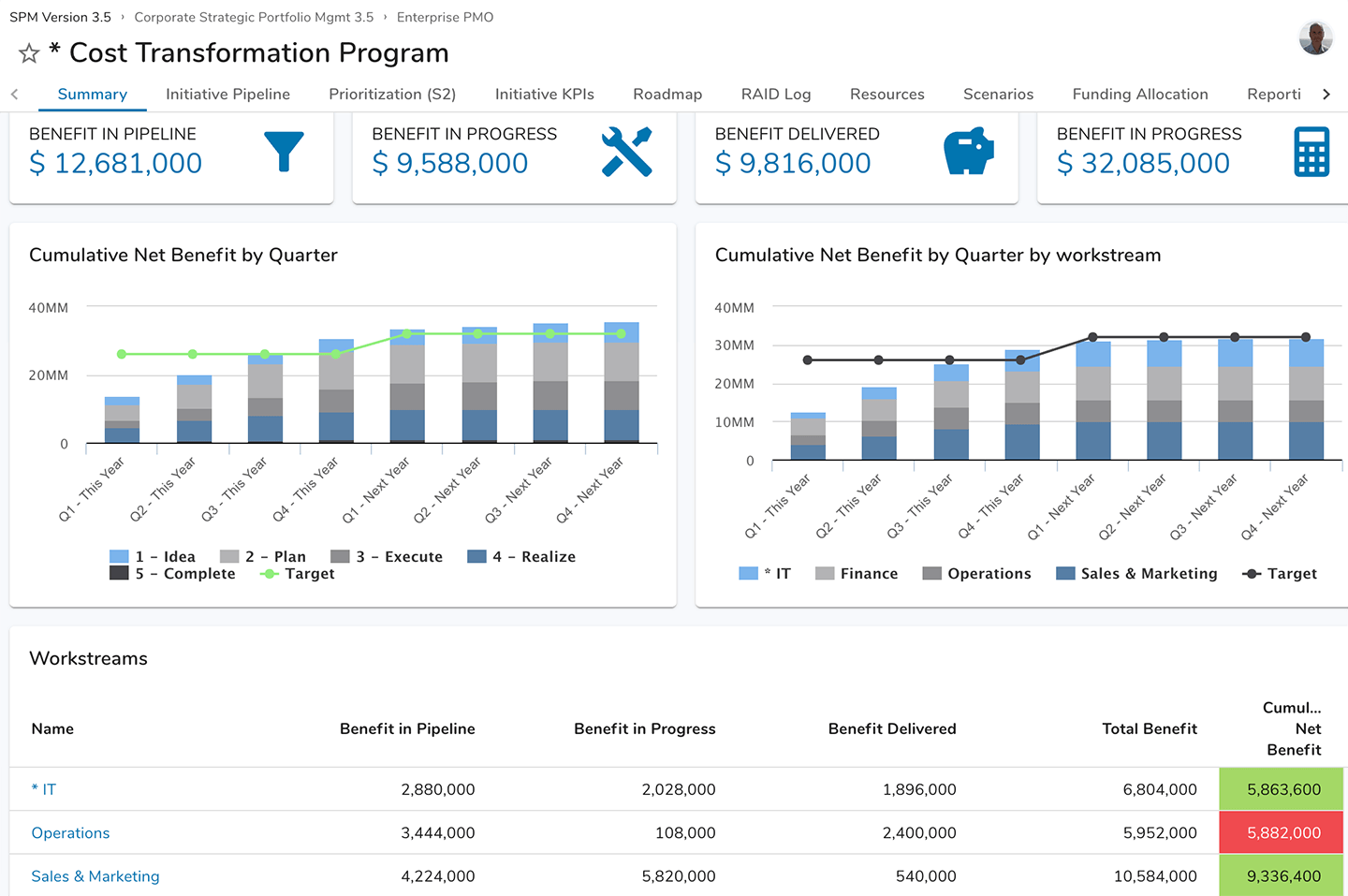In today’s dynamic business landscape, cost management has taken on a new level of importance. The disruptions brought by recent global events have forced business leaders to reevaluate their approach to costs. No longer is it sufficient to aim for cost reduction; the focus now is on attaining a sustainable and adaptable cost structure, referred to as cost transformation. It is no longer sufficient to merely strive for decreasing costs; rather, the emphasis has changed to attaining a cost structure that is both sustainable and adaptable, a procedure referred to as strategic cost transformation.
Let’s explore the concept of cost transformation and highlight the critical role of data, analytics, and artificial intelligence (AI) in driving this transformation. We will delve into the strategies and tools that can help businesses gain visibility into their spending, identify opportunities for improvement, and foster a culture of cost-consciousness.
Cost Transformation: A Paradigm Shift
In recent times, characterized by supply chain disruptions, global unrest, and unstable economic forecasts, business leaders find themselves reevaluating their cost strategies with a renewed perspective. The confluence of these significant events, alongside the enduring impact of the pandemic, has compelled CFO’s to reassess their cost structures and adapt to the ever-shifting economic landscape. In addition to these macro elements, several internal factors can drive the need for cost transformation within organizations.
These internal factors include:
- Aging Infrastructure: Many businesses grapple with outdated infrastructure, such as legacy IT systems and aging equipment, leading to inefficiency, maintenance costs, and upgrade costs.
- Inefficient Processes: Inefficiencies in operational processes can plague organizations, leading to wasted resources, time, and effort. Streamlining these processes becomes imperative to eliminate waste and enhance overall productivity.
- Duplication of Effort: Within large organizations, the presence of duplicate functions and processes can result in redundancy and inefficiency. These redundancies can manifest in various departments, from procurement to project management, and necessitate a closer examination.
In this context, cost transformation transcends the traditional approach of cost reduction, aiming to establish a resilient and sustainable cost behavior capable of weathering the challenges posed by these dynamic factors.
To initiate an effective process of cost transformation, organizations must acquire a thorough understanding of their expenses, taking into consideration all obstacles and the actions taken to address them. This necessitates a level of visibility into all aspects of spending, ranging from operational costs to procurement expenses. Unfortunately, many organizations continue to rely on disjointed data and basic Excel spreadsheets, hindering their ability to gain these essential insights.
From Cost Reduction to Cost Transformation

The lessons learned from recent events emphasize the importance of forward-thinking cost management. Rather than relying on historical spending patterns, companies are beginning to focus on what they should be spending independently of past expenses. Companies are rethinking their cost strategies, asking themselves not just “How much did we spend?” but more importantly, “How much should we be spending given our current goals and the foreseeable future?” Portfolio Transformation platforms enable leaders to gain a comprehensive view of their spending and model optimal cost structures from scratch.
They provide a holistic view of an organization’s expenditure, allowing leaders to visualize, analyze, and optimize costs in real-time.

Furthermore, these platforms aren’t just about numbers and data. They play a pivotal role in changing organizational culture. With the insights drawn from these platforms, leaders can champion a mindset that prioritizes value over mere cost-cutting. Employees are encouraged to think creatively, work collaboratively, and make decisions that are not just cost-efficient but also aligned with the company’s long-term vision and value proposition. In essence, it’s about nurturing a culture where cost-consciousness and innovation go hand in hand.
Applying Intelligence to Cost Management
Today’s data-driven landscape demands that businesses leverage advanced tools and technologies to maintain a competitive edge. According to Accenture research, 84% of C-suite executives believe that AI is essential to achieving their growth objectives. However, a significant challenge lies in reasonably scaling the use of AI and realizing measurable value from data in its current state.
Here are a few approaches that can facilitate cost transformation:
Analyzing Operations and Defining the “Right Cost” Structure
Advanced analytics and AI tools provide a granular view of cost-driving activities within a business. When combined with internal and external benchmarks, this insight allows organizations to identify opportunities for value creation. By unlocking trapped value, companies can optimize their cost structures.
Real-Time Scenario Modeling
AI can facilitate real-time reporting on various cost centers, allowing for immediate adjustments and optimizations. Advanced scenario modeling empowers companies to understand the immediate and future impact of business decisions on costs. With the right insights, employees can identify cost drivers in every activity, leading to more informed spending decisions.
Responding to Shifting External Conditions
AI/ML capabilities are helping organizations adapt their operations in real-time as market conditions evolve. For example, during the COVID-19 pandemic, AI-based analytics were used to adjust operational costs in several industries. According to IMF, “AI/ML capabilities are transforming the financial sector. AI/ML systems are reshaping client experiences, including communication with financial service providers (for example, chatbots), investing (for example, robo-advisor), borrowing (for example, automated mortgage underwriting), and identity verification (for example, image recognition). They are also transforming the operations of financial institutions, providing significant cost savings by automating processes, using predictive analytics for better product offerings, and providing more effective risk and fraud management processes and regulatory compliance.”
Tracking Sustainability Measures
Incorporating responsible sourcing tools and sustainability dashboards allows companies to monitor sustainability across their value chain. By identifying the activities that drive carbon emissions, organizations can adjust their operations and spending to reduce their environmental impact.
Driving a Cost Transformation Mindset

Companies embedding a cost-management mindset in a company culture can lead to lasting cost-reduction. Communication and transparency about cost transformation strategies will leave an imprint that everyone, from employees to stakeholders.
Making employees aware of the broader implications of savings, like equating cost reductions to revenue, can enhance this mindset. Analyzing spending patterns reveals potential savings, and benchmarking against industry standards sets measurable goals. Ongoing monitoring, combined with incentivizing staff for cost-saving suggestions, ensures that cost management becomes an ingrained philosophy, not just a fleeting initiative.
In summary, cost transformation has emerged as a crucial strategy for businesses looking to thrive in a rapidly changing world. It transcends the traditional approach of cost reduction and instead focuses on creating sustainable cost behaviors. With the power of data, analytics, and AI, organizations can gain deep visibility into their spending, identify opportunities for improvement, and respond to dynamic market conditions.
Companies that leverage advanced technologies are not only reducing costs but also achieving a genuine cost transformation. If you aspire to set your company on the path to sustainable, long-term value creation, I encourage you to explore the possibilities offered by cost transformation. Feel free to contact Shibumi for further insights and guidance on your journey to unlocking sustainable value.

